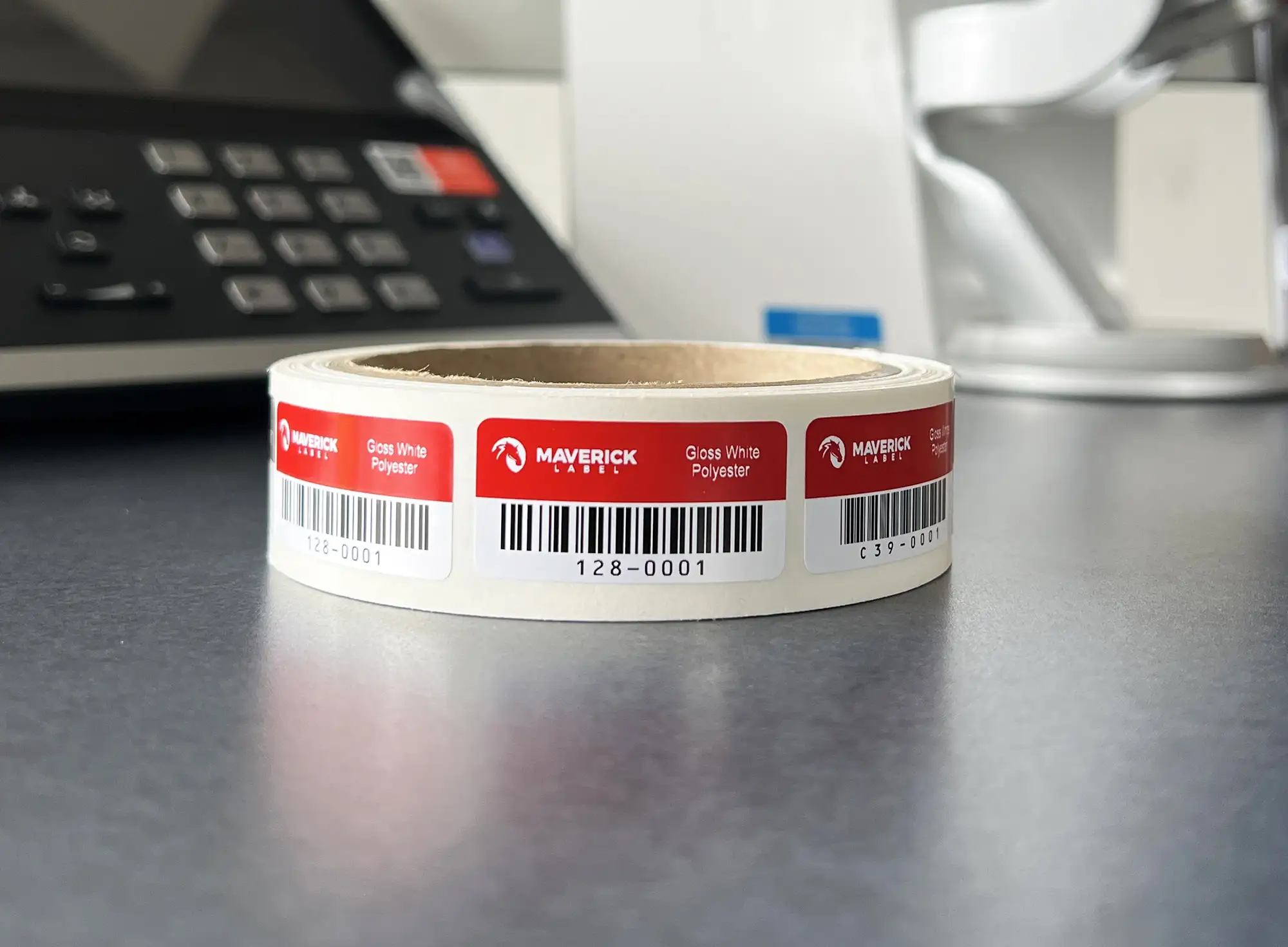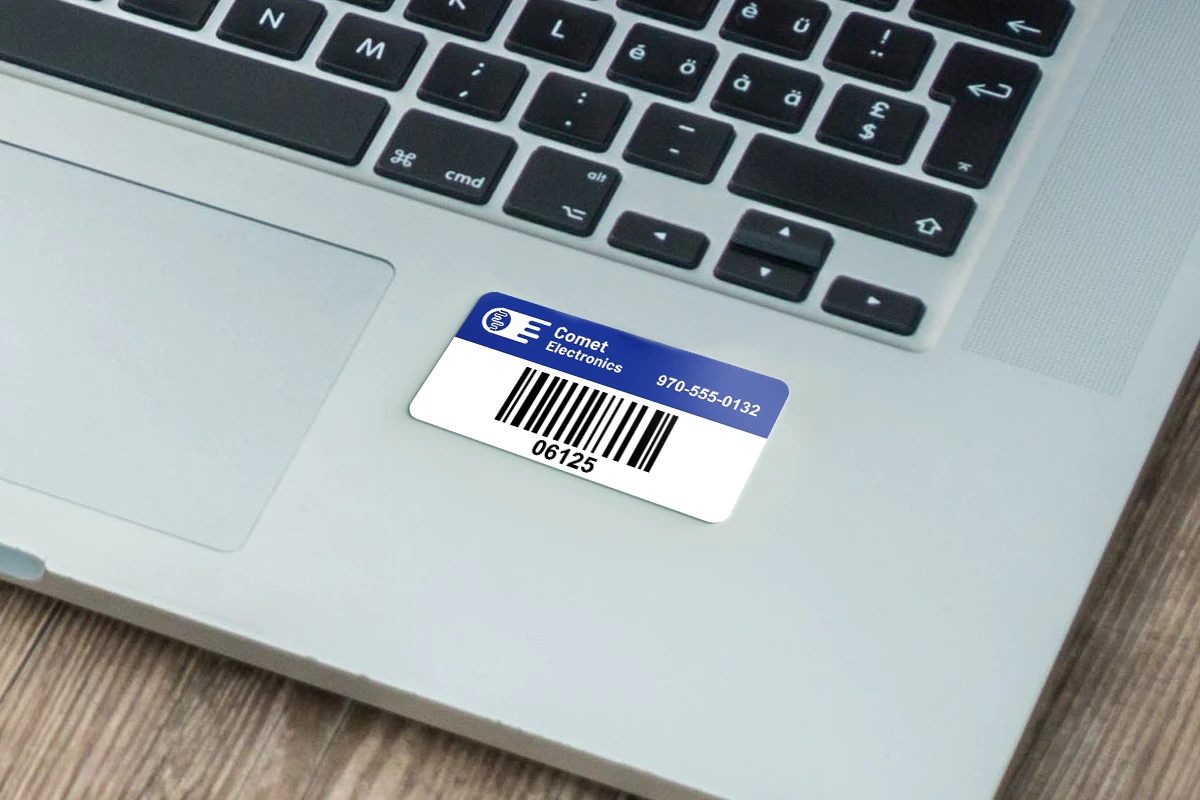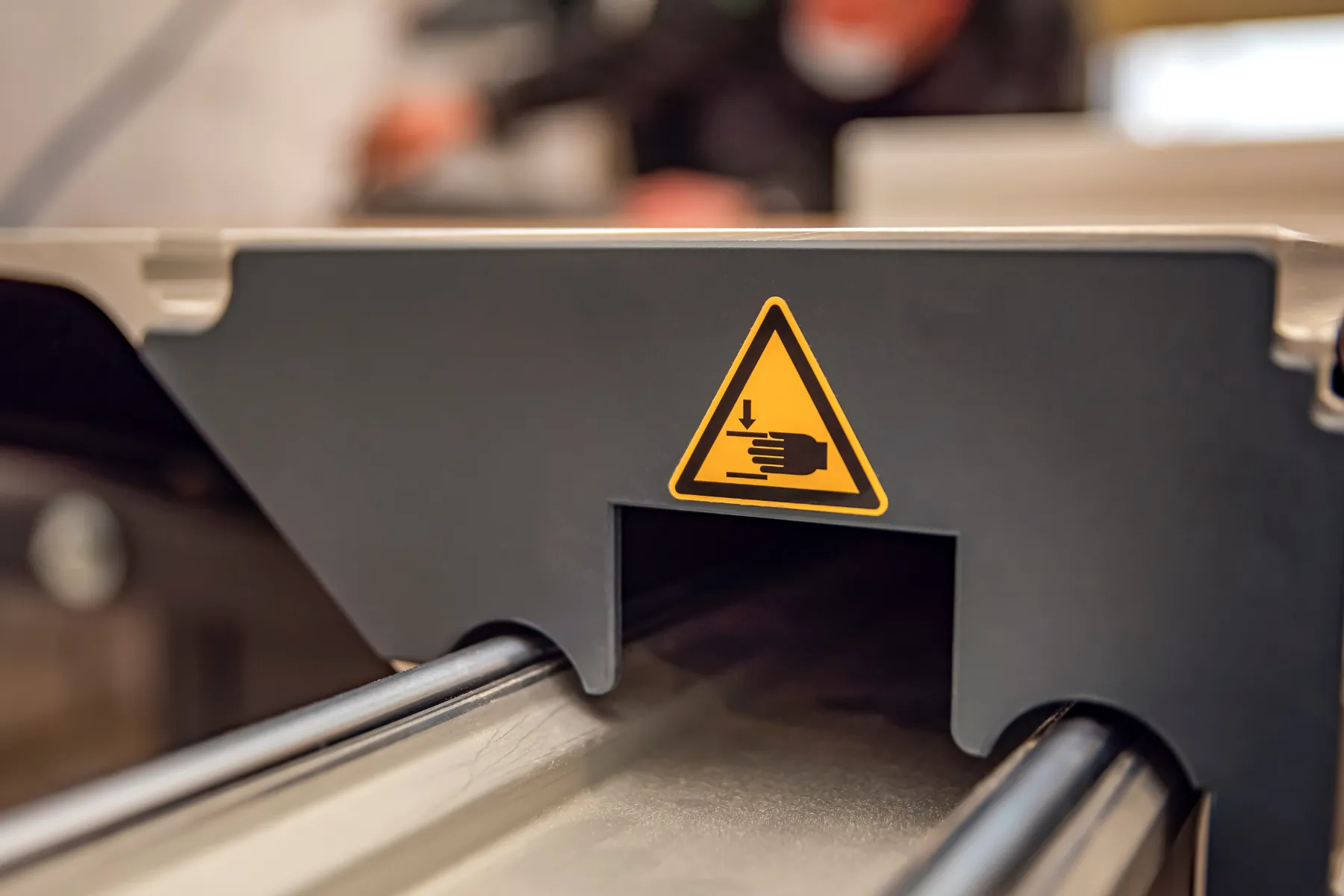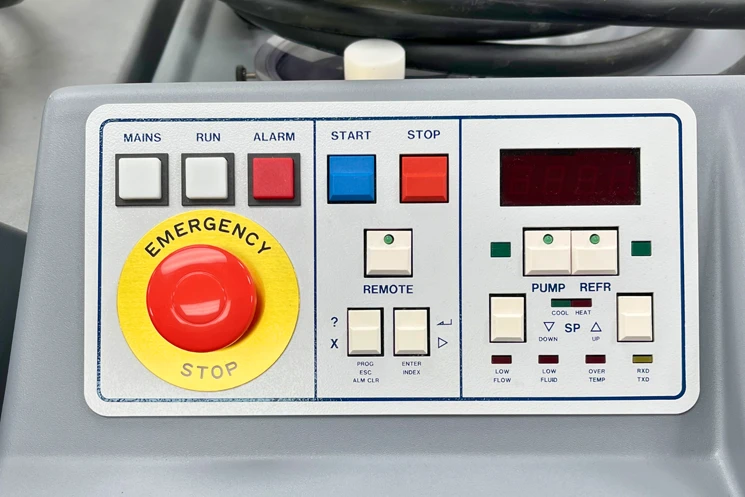Whether you work in retail, manufacturing, tech, or any large organization, you have most likely come across asset labels. Asset tags help to track items over time, and they are essential tools in managing asset label applications.
These tools help track inventory and hold employees accountable for work equipment like computers. They are valuable for protecting company assets. Learn about the basics of asset labels and why they are essential for various industries.
What Is an Asset Tag?
An asset label, also known as a Property ID Tags, is a small, simple label with a strong adhesive. It usually includes a barcode or QR code for scanning. Once scanned, this barcode label will allow users to view the entire lifecycle of the product. Users will have a complete timeline of events and details such as:
- When the asset was purchased
- Where an asset is located and when it has moved
- When the asset was assigned to an employee
- Which employee the asset was assigned to
- When and to whom the asset was reassigned
- When the asset was upgraded or underwent maintenance
- Loans of the asset
- Retirement of the asset
For example, an organization may use asset labels to track staff computers. By leveraging the technology behind asset labels, a company can learn common patterns and better predict supply costs. This information can help financial teams budget for equipment replacements with more accuracy.
Implementing a system that leverages asset tags can help discourage theft and better protect your equipment and inventory. Suppose you hand out laptops to all new employees without asset tagging. In that case, you risk never seeing some of those laptops again when some employees leave. Learn more from our blog 6 Key Steps to an Effective Asset Tagging System.
People are more likely to return tagged assets. The data available when organizations leverage asset labels is incredibly valuable with a wide range of uses and implications.
What Should Organizations Include on Asset Tags?
Asset labels are generally relatively small and include only a few factors. Custom asset labels typically have:
Barcode or QR Code
Every asset tag needs a barcode or a QR code. This detail lets you access all important information about the lifecycle of any inventory or equipment. These codes are helpful in inventory audits, accounting compliance, budgeting, and theft prevention efforts.
Unique Identification Number
Most custom asset labels also include a unique identification number or a serial number. This number helps organizations track all inventory, assets, and equipment.
They can check their status and location without scanning the physical barcode. These can also help if you damage barcodes. Organizations can use unique identification numbers to classify and categorize their inventory and assets for internal processes.
Company Logo
Company logo cab help protect your assets. It also makes it easier for users to see that the item belongs to your company.
Company Contact Information
If your company uses equipment that can be lost, stolen, or confused, add contact information to your asset tags. For example, tablets can easily be mistaken for one another, and a traveling employee may misplace one. Contact information on an asset tag can increase the chances that you will recover lost equipment.

Types of Asset Labels
Most asset labels have the same main features, but there are many different materials to choose from. The appropriate material for your asset tags will depend on various factors, including:
- What are you labeling, and what is it made of?
- Will high temperatures, direct sunlight, or cleaning products expose your assets? Consider using high quality materials if exposure to harsh conditions is likely.
- What is the shape of the surface needing the label? Curved surfaces require different tag materials than flat ones.
- Some tags are tamper-evident and difficult to remove, which can help prevent theft.
Using custom asset tags in your inventory management can save you time and help you track your assets. They can also help you gather important data, prevent theft, and understand the lifecycle of your equipment.
Printable Asset Tag FAQs
Printable parcel asset tags are special labels for parcels and packages. They help track and identify items during shipping.
These tags are different from regular asset tags for internal use. Manufacturers design them to be durable during transit. You can also customize them with details that are important for parcel asset tag applications.
People often use these tags in logistics, warehousing, and shipping. They help track parcels accurately, manage inventory, and make handling easier. Printable tags can include barcodes, QR codes, and detailed tracking information, making them ideal for shipping workflows.
Yes, printable parcel asset tags are fully custom. You can select details such as size, serial number, barcode type, unique identifiers, and even add handling instructions. This flexibility allows you to create custom asset tags tailored to your company’s specific tracking and security requirements.
Durable materials like polyester and vinyl are excellent for printable parcel asset tags. These high-quality materials can handle humidity, temperature changes, and rough handling. This keeps the tags readable and intact during transit.
Absolutely! E-commerce businesses use printable parcel asset tags to enhance tracking, reduce loss, and manage returns efficiently. These tags help identify parcels correctly, even during high-volume shipments, and improve overall logistics efficiency.
Printable parcel asset tags help track, secure, and manage packages during shipping. These applications include inventory management, logistics tracking, shipping workflows, and asset identification.
They help businesses track parcels, stop theft or loss, and ensure smooth handling at each stage of transit. Using asset tags with barcodes or QR codes helps companies track parcel history. They can also check location details and manage returns. This is especially useful in e-commerce and high-volume shipping.
Asset tag sticker templates can have different designs. They may include barcodes, QR codes, and unique serial numbers. Some templates also feature company logos and contact details.
These templates vary based on asset type and industry requirements. This way, each tag will have the right tracking and branding for your parcels.



